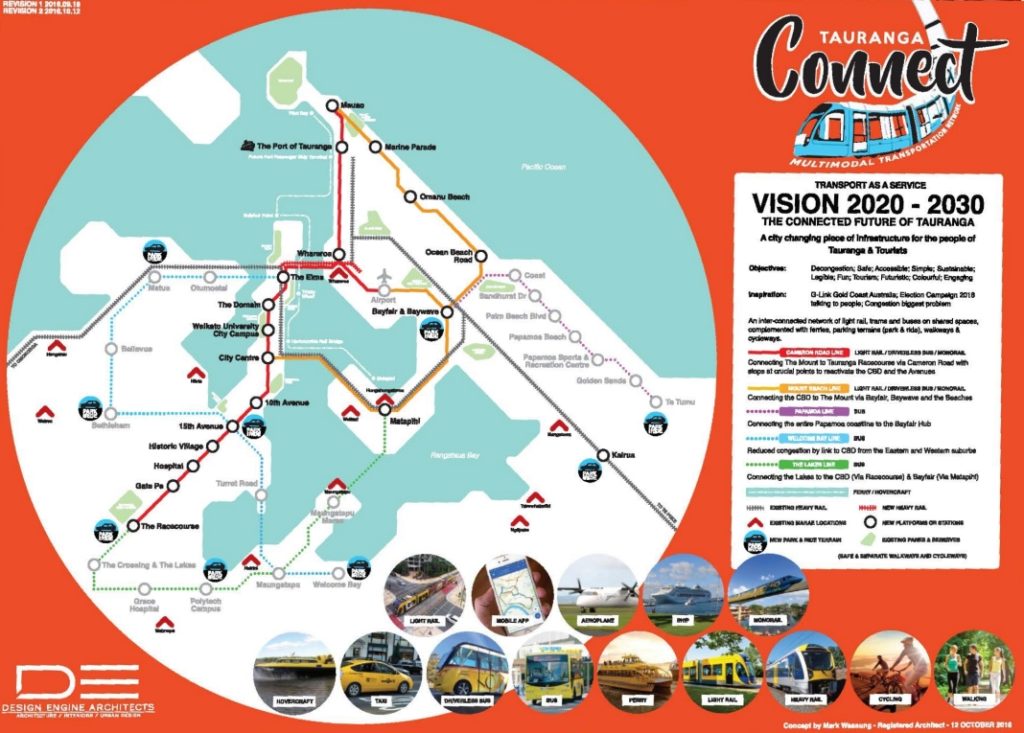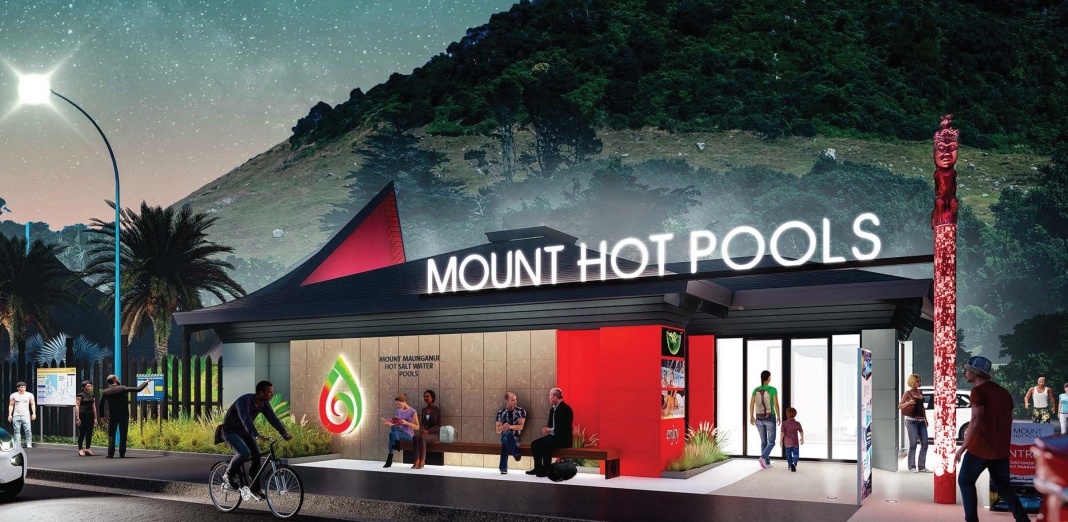Bay of Plenty Business News is running a series in which we ask prominent Bay personalities for their views on business and life in the Bay – what’s good, what’s bad and what their vision is for the future.
This month we talk to Mark Wassung, Director of Design Engine Architects. Mark is a Tauranga Architect and Urban Designer, a self-proclaimed ‘futurist’ whose vision for the environment in which we live goes well beyond the award-winning buildings he and the Team have designed.
A Registered Architect in South Africa and New Zealand practicing for 25 years, Mark has been passionately involved with key infrastructure projects including his favourite, the Auckland International Airport between 1998 and 2002, which succeeded in making the Top 10 list of ‘Best Airports in the World.’

He talks fondly of his Hamilton Grand Design Project (top five in New Zealand for TVNZ’s “Art of the Architect” – Series 1, Episode 2, which is still available OnDemand), the location where he and his wife Abigail married and while working together on the successful project.
He believes opportunities for real progress abound in the Bay of Plenty right now and he’s not daunted about swimming against the tide. Take the issue of the Government appointment of commissioners in Tauranga City: According to Wassung, “This presents a golden opportunity for real progress and decisiveness, without the baggage of political infighting!”
“I’ve met with the commissioners and they’re intelligent, articulate and enthusiastic about implementation of infrastructure”.
“For a futurist like me this could be just the opportunity our city needs to reset the course for Tauranga to get back on the right track,” he hopes.

Three community-led design projects that their practice has been involved in: Tauranga CONNECT Multimodal Transport Network VISION 2020 to 2030 designed in 2016; Cameron Road Transport Corridor and Urban Intensification; and Rangiuru Log Transfer Station Road to Rail have shifted thinking and enabled exciting opportunities for infrastructure investment and business growth, attracting CIP Crown Insfrastructure Partners Funding to the region.
“Rapid population growth over the last 20 years, has made things extremely challenging as this has put pressure on our existing infrastructure which now needs urgent investment, before any further population growth.”
“Planning can’t just have a two year, or five year, or ten year horizon – it must always have an eye on the ‘far away’ because the ‘far away’ will eventually be the ‘up close,’” quips Wassung. “Planning means looking at the horizon and saying, “Lets make things better,”… that’s my space!”
Two other recently completed projects, the Mount Hot Pools Exterior Revitalisation and Baywave Massage Suite are the kind of projects he revels in, taking existing assets and enhancing them with clever, innovative and cost effective design techniques.
“I love being an instigator of change that refines our modern lifestyles and our commercial and residential living spaces.”
“That’s why I’m really enjoying my time on the refurbishment of Armitage Hotel (originally ‘Willow Park’), a Tauranga landmark. The concept is to work with the existing building and add amenity through clever urban design and architecture that acknowledges the past while making it modern, upmarket and connecting with people and the city.”
“As the region becomes a more popular destination, good quality hotel accommodation becomes a critical part of our infrastructure. I want visitors to remember their Tauranga stay for the feel-good experience of the great hotel as much as for its diverse culture, art, architecture, fishing and awesome bike rides.”
While Mark still loves the ‘bread and butter’ challenges of commercial, residential and revitalisation projects which dominate Design Engine Architect’s focus, he is equally excited by the big picture.
“I guess that’s why I put myself forward to be part of the Tauranga Art Gallery Trust Board, serving since 2017 as Trustee for three years and the fourth as Chair, and why I commit to be part of the numerous Council and Community workgroups with which I am involved. Positive change is something you make happen by listening, getting involved and looking at positive, creative solutions.”
Wassung believes it is Tauranga’s time for courageous, bold and transformational design and decision making by central government, local government, communities, planners, designers and architects to lead us into the future.
“No more paralysis by analysis and endless wasting of time and money on more reports. Let’s get on with smart infrastructure, CBD revitalisation, multimodal transport network with connected centres”.
Wassung’s future projects include 3D-printed bus shelters and affordable housing, a 1000 year forest and lake park for Kopurererua Valley, a cultural centre, and an intergenerational apartment building for seniors and students in the CBD.
Design is transferable across commercial, residential and city revitalisation he believes.
Mark is keen to connect with local business owners and landlords to help revitalise the city from the ground up as well as work with residents on crafted residential homes throughout the Bay.












